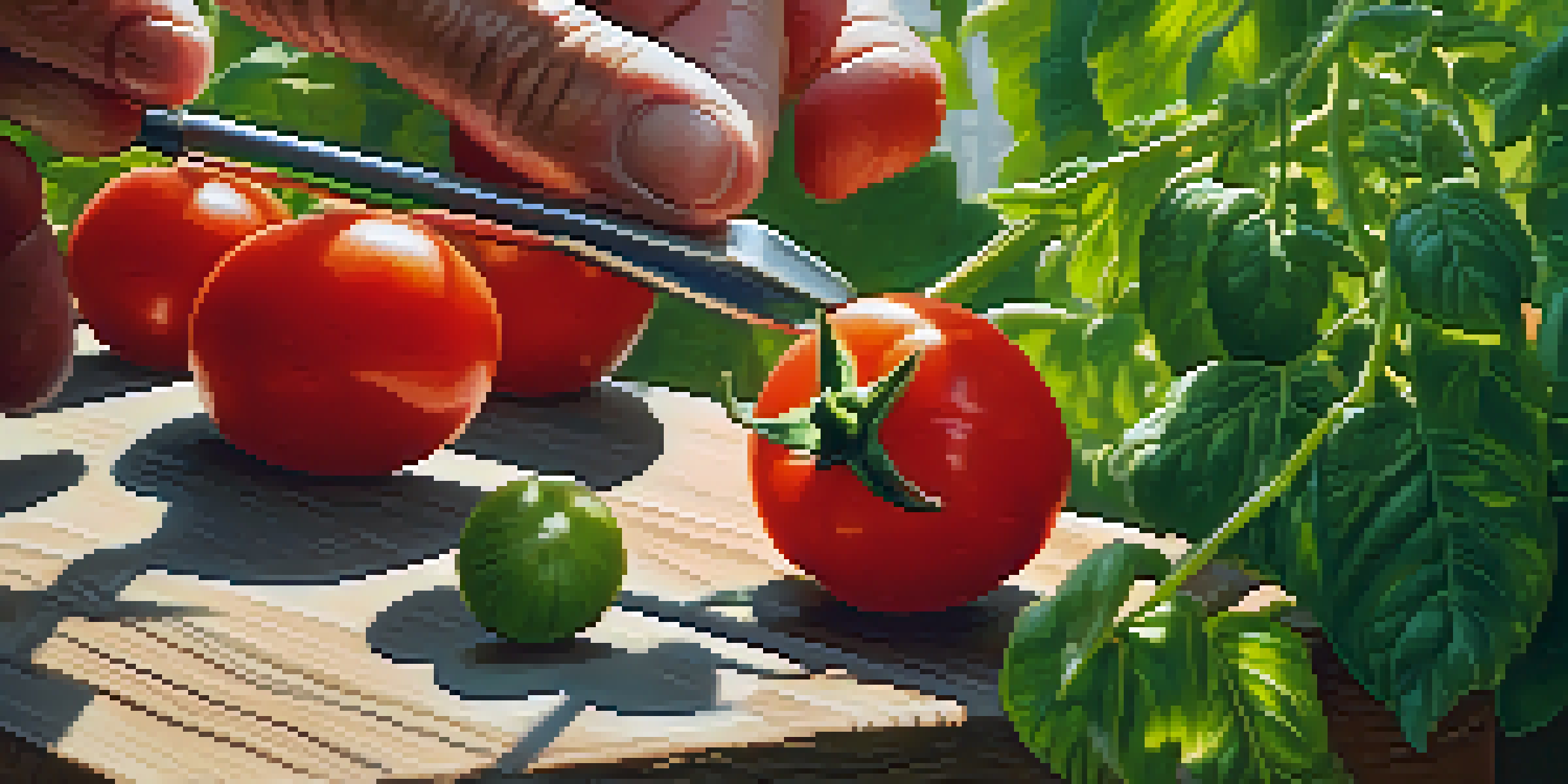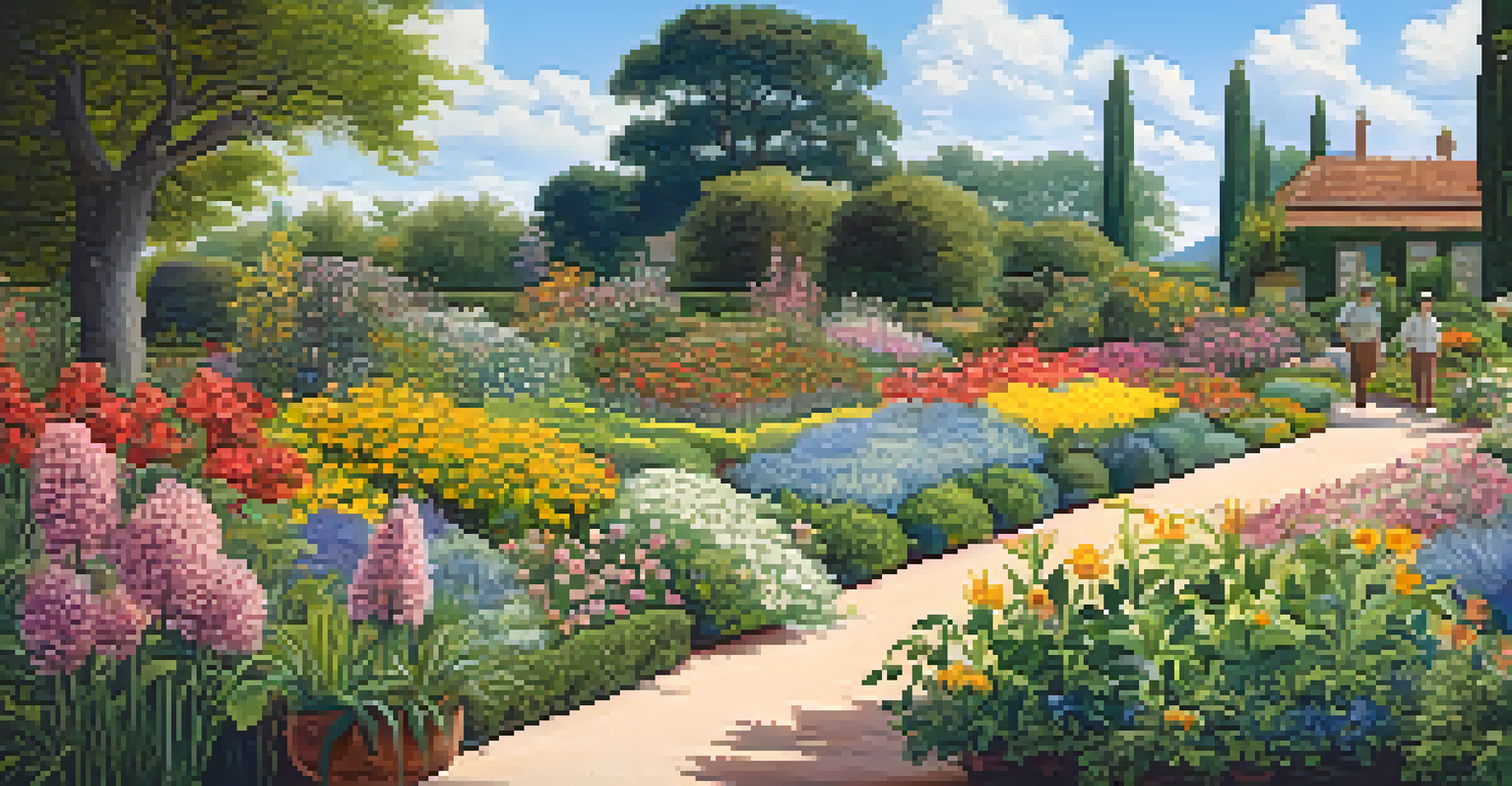Seed Saving: Techniques for Future Plant Propagation

Understanding the Importance of Seed Saving
Seed saving is not just a practice; it's a powerful way to maintain biodiversity. By saving seeds from your own plants, you preserve unique traits and flavors that commercial varieties might lack. This practice also fosters a deeper connection with your garden, as you become more attuned to the life cycles of your plants.
The ultimate goal of farming is not the cultivation of crops, but the cultivation and perfection of human beings.
Moreover, seed saving can be a cost-effective solution for gardeners. Instead of purchasing new seeds each season, you can rely on your own reserves, which can significantly reduce gardening expenses. Additionally, it empowers you to grow plants that are well-suited to your local environment, enhancing their resilience against pests and diseases.
Lastly, seed saving contributes to environmental sustainability. By selecting and saving seeds from your healthiest plants, you promote genetic diversity within your garden. This not only supports local ecosystems but also helps safeguard against the loss of plant varieties that are increasingly threatened in today’s agricultural landscape.
Choosing the Right Plants for Seed Saving
Not all plants are created equal when it comes to seed saving. It's crucial to select open-pollinated or heirloom varieties, as these will produce seeds that yield plants similar to their parent. Hybrid varieties, on the other hand, often produce unpredictable results and are generally not suitable for saving.

Additionally, consider the health and vigor of the plants you choose. Selecting seeds from the strongest and healthiest plants ensures that you are passing on favorable traits to future generations. This approach not only enhances your garden's productivity but also improves its overall resilience.
Seed Saving Enhances Biodiversity
Saving seeds preserves unique plant traits and fosters a deeper connection with your garden.
Lastly, take into account the growing conditions in your area. Plants that thrive in your specific climate are more likely to produce viable seeds. By focusing on local varieties, you can cultivate plants that are naturally adapted to your environment, making the whole process of gardening simpler and more successful.
Timing: When to Harvest Seeds
Timing is everything when it comes to seed harvesting. It's essential to wait until the seeds are fully mature, as immature seeds may not germinate effectively. Generally, this means observing the fruits or flowers and waiting until they exhibit signs of ripeness, such as color changes or drying out.
Saving seeds is a way of saving the future of food.
For many plants, this can be a waiting game. For example, beans should be harvested when the pods are dry and brittle, while tomatoes should be collected once they are fully ripe. It’s a bit like waiting for a cake to bake; if you take it out too soon, you might not get the results you’re hoping for.
Once you’ve determined that your seeds are ready, it's crucial to act quickly. Delaying the harvest may result in seeds being lost to pests or environmental factors. By staying vigilant and monitoring your plants closely, you can ensure that you capture those precious seeds at just the right moment.
Proper Techniques for Collecting Seeds
Collecting seeds can be a straightforward process if done correctly. Start by gently removing the seeds from the fruit or flower. This could mean squeezing out the seeds from a tomato or shaking them from a dried flower head. The key is to be gentle to avoid damaging the seeds.
After extraction, it's important to clean the seeds thoroughly. This removes any pulp, debris, or potential diseases that could affect germination. Rinsing seeds in water or using a fine mesh sieve can help in this process, ensuring you have clean, viable seeds for future planting.
Choose the Right Plants
Selecting open-pollinated or heirloom varieties ensures you can save seeds that produce similar plants.
Finally, allow your seeds to dry completely before storage. This step is crucial to prevent mold and ensure long-term viability. Spread them out on a paper towel or a plate in a cool, dry area, and once they’re dry, you can move on to the next step: storing them properly.
Drying and Preparing Seeds for Storage
Once your seeds are collected, drying them properly is essential for longevity. Place them in a well-ventilated area out of direct sunlight to prevent overheating. Seeds that retain moisture can succumb to mold, so ensuring they are completely dry will enhance their shelf life.
You can also use silica gel packets or rice in storage containers to absorb any remaining moisture. Simply place the seeds in an airtight container with these moisture absorbers for added protection. This small step can make a significant difference in keeping your seeds viable for years to come.
Finally, label your seeds with their variety and the date of collection. This simple practice helps you keep track of your seed inventory and ensures that you can remember which seeds to plant when the next gardening season arrives.
Best Practices for Storing Seeds
Storing seeds correctly is just as important as collecting and drying them. Ideally, seeds should be kept in a cool, dark place to preserve their viability. A pantry or a dedicated seed storage box can work well, but avoid areas that experience temperature fluctuations, like garages or attics.
Additionally, consider using airtight containers to protect your seeds from moisture and pests. Glass jars, plastic containers, or even envelopes can serve this purpose. Just make sure they are sealed tightly to create a barrier against any unwanted elements.
Proper Seed Storage is Crucial
Correctly drying and storing seeds in a cool, dark place helps maintain their viability for future planting.
Lastly, check your stored seeds periodically. This helps ensure that they're still viable and allows you to replace any that may have been damaged or lost. This proactive approach keeps your seed collection healthy and ready for planting when the time comes.
Tips for Successful Seed Germination
When the time comes to sow your saved seeds, it’s important to remember that not all seeds germinate at the same rate. Some may require specific conditions, like stratification or scarification, to break dormancy. Understanding these requirements can dramatically improve your germination success.
For instance, seeds from plants like morning glories may need a little nicking or soaking before planting to encourage sprouting. On the other hand, certain perennial seeds may benefit from a cold period. Researching the unique needs of your saved seeds can lead to a thriving garden.

Lastly, be patient and observant during the germination process. Some seeds may take longer than others to sprout, and environmental factors like temperature and moisture play a big role. By maintaining optimal conditions and keeping a close eye on your seedlings, you’ll set the stage for a bountiful garden.